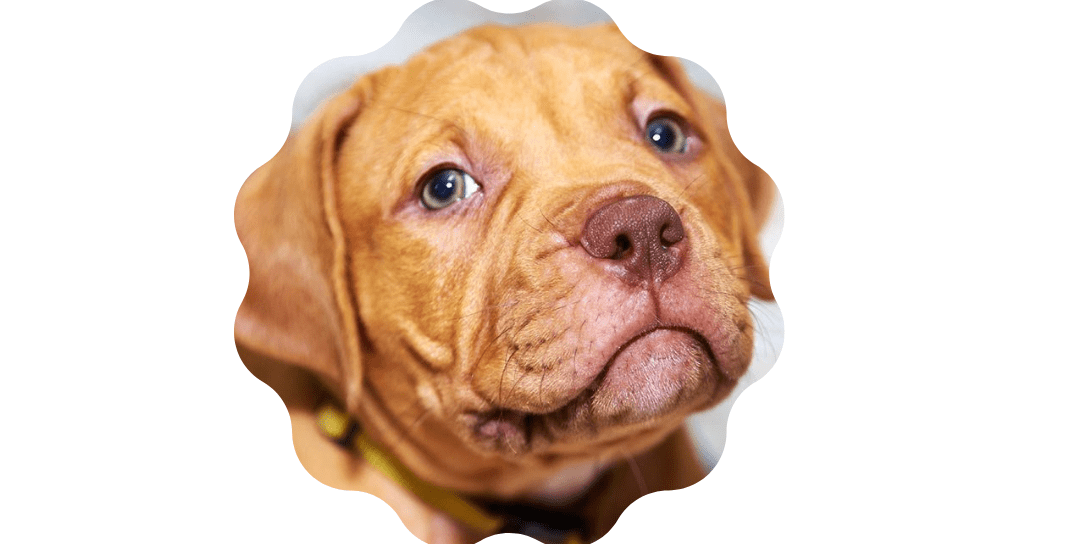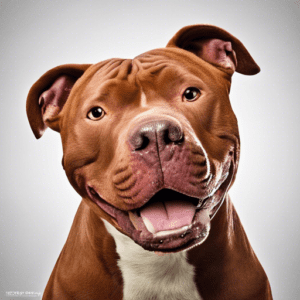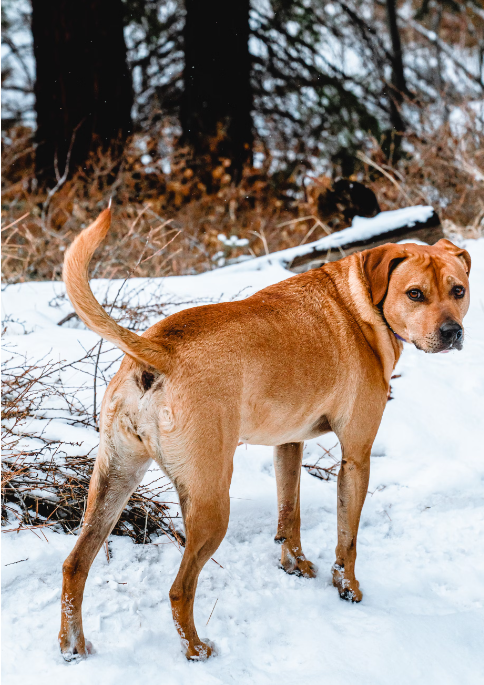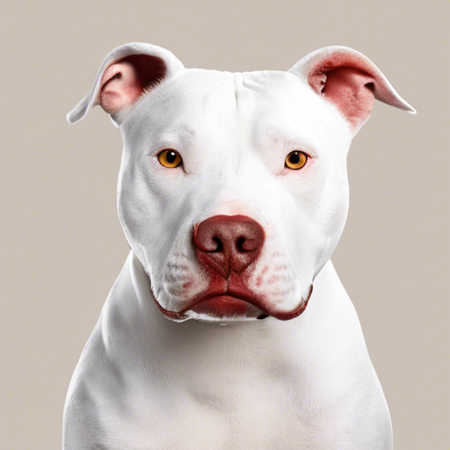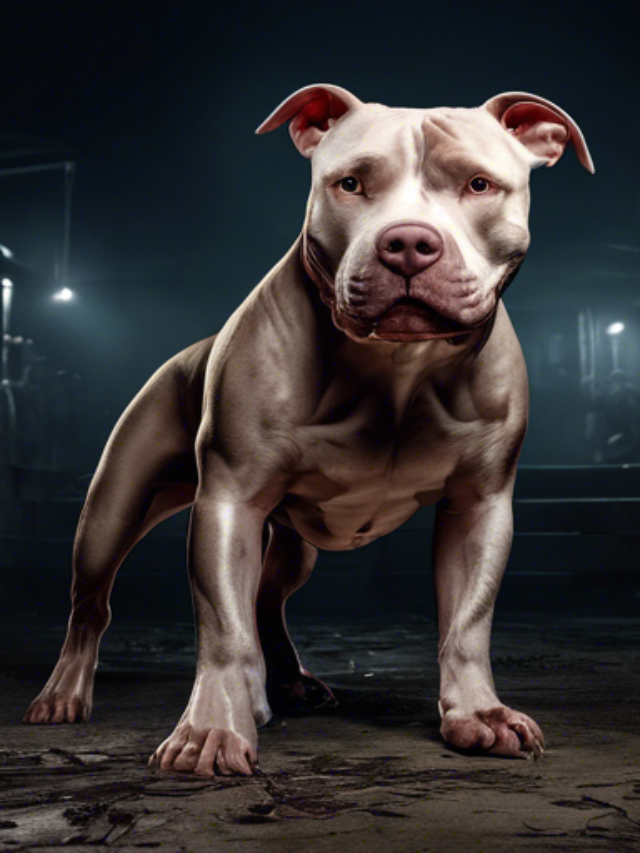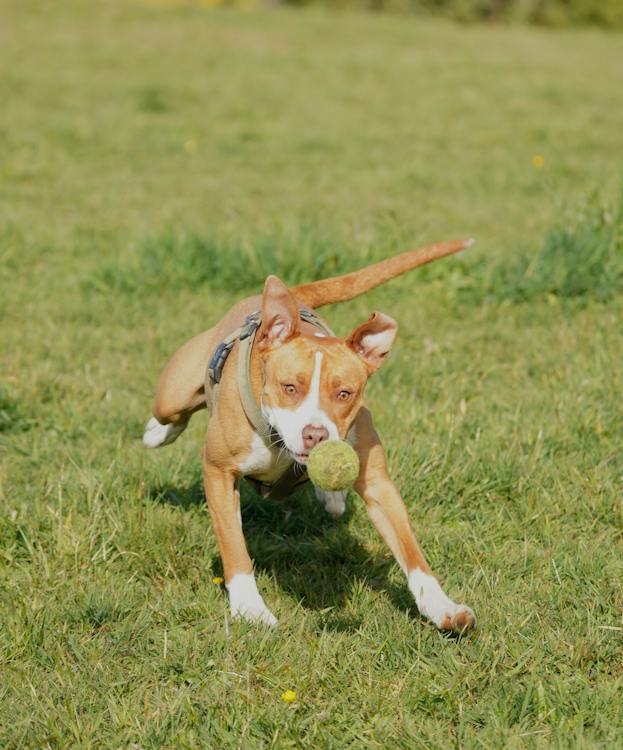The Importance of Red Nose Pitbull Dog Breed
Red Nose Pitbulls are an iconic breed known for their striking appearance and loyal nature. Originating from the United States, these dogs have garnered attention for their unique traits and characteristics. In this article, we’ll delve into the most important aspects of the Red Nose Pitbull breed, covering everything from their physical features to their suitability as family pets.
Introduction to Red Nose Pitbulls
What defines a Red Nose Pitbull?
Red Nose Pitbulls are a specific bloodline of American Pit Bull Terriers distinguished by their red-colored noses. This trait sets them apart from other Pitbull varieties and contributes to their distinct appearance.
Historical background
The history of Red Nose Pitbulls traces back to the early days of America, where they were bred for various purposes, including hunting, farming, and companionship. Their lineage is intertwined with the development of the Pitbull breed as a whole.
Physical Characteristics
Red Nose Pitbulls exhibit a muscular build with a sleek, athletic physique. They typically have a medium to large size, with males weighing between 35-65 pounds and females between 30-50 pounds.
Their coats come in various colors, but the defining characteristic is the red-colored nose, which gives them their name. The coat can range from solid red to a combination of red and white, with a short, smooth texture.
Temperament and Behavior
Personality traits
Red Nose Pitbulls are known for their affectionate and loyal nature. They are often described as intelligent and eager to please, making them excellent companions for dedicated owners. Despite their strong appearance, they are typically gentle and affectionate towards their families.
Socialization and training
Proper socialization from an early age is crucial for Red Nose Pitbulls to ensure they develop into well-rounded adults. Positive reinforcement training methods work best with this breed, as they respond well to praise and rewards.
Health Considerations
Common health issues
Like all dog breeds, Red Nose Pitbulls are prone to certain health issues, including hip dysplasia, allergies, and skin infections. Regular veterinary check-ups and a balanced diet can help mitigate these risks.
Proper care and prevention
Maintaining a healthy weight through regular exercise and providing a nutritious diet are essential for keeping Red Nose Pitbulls in optimal health. Additionally, preventive measures such as vaccinations and flea/tick control are vital for their well-being.
Exercise and Activity Requirements
Red Nose Pitbulls are energetic dogs that require plenty of physical activity to stay happy and healthy. Daily walks, playtime, and interactive toys can help fulfill their exercise needs and prevent boredom.
Mental stimulation
In addition to physical exercise, mental stimulation is crucial for preventing behavioral issues in Red Nose Pitbulls. Engaging them in activities such as puzzle toys, obedience training, and agility courses can help keep their minds sharp.
Nutritional Needs
Dietary requirements
Red Nose Pitbulls thrive on a balanced diet that includes high-quality protein sources, carbohydrates, fats, vitamins, and minerals. It’s essential to choose dog food specifically formulated for their breed size and activity level.
Recommended feeding schedule
Feeding Red Nose Pitbulls two to three times a day, depending on their age and activity level, is recommended. Portion control is key to preventing obesity and maintaining a healthy weight.
Grooming Tips
Coat care
Due to their short, smooth coats, Red Nose Pitbulls are relatively low-maintenance in terms of grooming. Regular brushing helps remove loose fur and reduces shedding, while occasional baths keep their coat clean and healthy.
Bathing and hygiene
Using a mild dog shampoo and thoroughly rinsing their coat is essential when bathing Red Nose Pitbulls. It’s also important to clean their ears regularly and trim their nails to prevent overgrowth and discomfort.
Living Environment
Suitable living conditions
Red Nose Pitbulls can adapt well to various living environments, including apartments, as long as they receive adequate exercise and mental stimulation. Access to a secure outdoor space where they can run and play is ideal.
Indoor vs. outdoor preferences
While Red Nose Pitbulls enjoy spending time outdoors, they are also content to relax indoors with their families. However, it’s essential to provide them with sufficient outdoor time to meet their exercise needs.
Compatibility with Families
Interaction with children
Red Nose Pitbulls are known for their gentle and affectionate nature, making them great companions for families with children. However, supervision is necessary, especially with young children, to ensure safe interactions.
Other pets in the household
With proper socialization, Red Nose Pitbulls can get along well with other pets in the household, including cats and dogs. Early introductions and positive experiences help foster harmony among pets.
Training Methods
Positive reinforcement techniques
Red Nose Pitbulls respond well to positive reinforcement training methods, such as praise, treats, and play rewards. Consistency and patience are key when teaching them obedience commands and desirable behaviors.
Obedience training
Enrolling Red Nose Pitbulls in obedience classes can be beneficial for both owners and dogs, providing structured training and socialization opportunities. This helps build a strong bond between the owner and their pet while promoting good behavior.
Legal and Ethical Considerations
Breed-specific legislation
Red Nose Pitbulls are subject to breed-specific legislation in some areas due to misconceptions and stereotypes surrounding the breed. It’s essential for owners to familiarize themselves with local laws and regulations to ensure compliance.
Responsible ownership
Responsible ownership plays a crucial role in dispelling myths about Red Nose Pitbulls and promoting positive perceptions of the breed. Proper training, socialization, and supervision are essential for preventing incidents and promoting responsible pet ownership.
Finding a Reputable Breeder
Researching breeders
When looking for a Red Nose Pitbull puppy, it’s important to research breeders carefully and choose one with a reputation for ethical breeding practices. Visiting the breeder’s facilities and meeting the parent dogs can provide valuable insights into the puppy’s health and temperament.
Avoiding puppy mills
Avoid purchasing Red Nose Pitbulls from puppy mills or pet stores, as these sources often prioritize profit over the well-being of the dogs. Opting to adopt from shelters or rescue organizations is another option for finding a Red Nose Pitbull in need of a loving home.
Cost of Ownership
Initial expenses
The cost of acquiring a Red Nose Pitbull puppy from a reputable breeder can vary depending on factors such as lineage, pedigree, and location. In addition to the purchase price, owners should budget for initial veterinary expenses, supplies, and equipment.
Long-term financial commitment
Owning a Red Nose Pitbull involves long-term financial commitments, including ongoing veterinary care, grooming supplies, food, and other essentials. It’s important for prospective owners to consider these expenses before bringing a dog into their home.
Community and Resources
Online communities and forums
Joining online communities and forums dedicated to Red Nose Pitbulls can provide valuable support, advice, and resources for owners. These platforms offer opportunities to connect with other enthusiasts, share experiences, and seek guidance on various topics related to the breed.
Breed-specific organizations
Breed-specific organizations and clubs focused on Red Nose Pitbulls can offer educational resources, breed information, and networking opportunities for enthusiasts. Participating in events and activities hosted by these organizations can enrich the ownership experience and contribute to the well-being of the breed.
Conclusion
Red Nose Pitbulls are more than just a breed; they are loyal companions, loving family members, and devoted protectors. With their unique characteristics and gentle demeanor, they have endeared themselves to countless owners around the world. By understanding their needs and providing proper care, Red Nose Pitbulls can thrive in various environments and continue to bring joy to those fortunate enough to share their lives.
FAQs (Frequently Asked Questions)
Are Red Nose Pitbulls aggressive?
Red Nose Pitbulls are not inherently aggressive. Like any breed, their temperament is influenced by genetics, upbringing, and socialization.
Do Red Nose Pitbulls require a lot of exercise?
Yes, Red Nose Pitbulls are active dogs that require daily exercise and mental stimulation to stay healthy and happy.
Are Red Nose Pitbulls suitable for families with children?
Yes, Red Nose Pitbulls are known for their gentle and affectionate nature, making them great companions for families with children when properly trained and socialized.
Do Red Nose Pitbulls have specific dietary requirements?
Red Nose Pitbulls require a balanced diet rich in protein, carbohydrates, fats, vitamins, and minerals to support their energy levels and overall health.
Are Red Nose Pitbulls prone to any health issues?
Like all dog breeds, Red Nose Pitbulls may be prone to certain health issues, including hip dysplasia, allergies, and skin infections. Regular veterinary check-ups and preventive care can help mitigate these risks.
